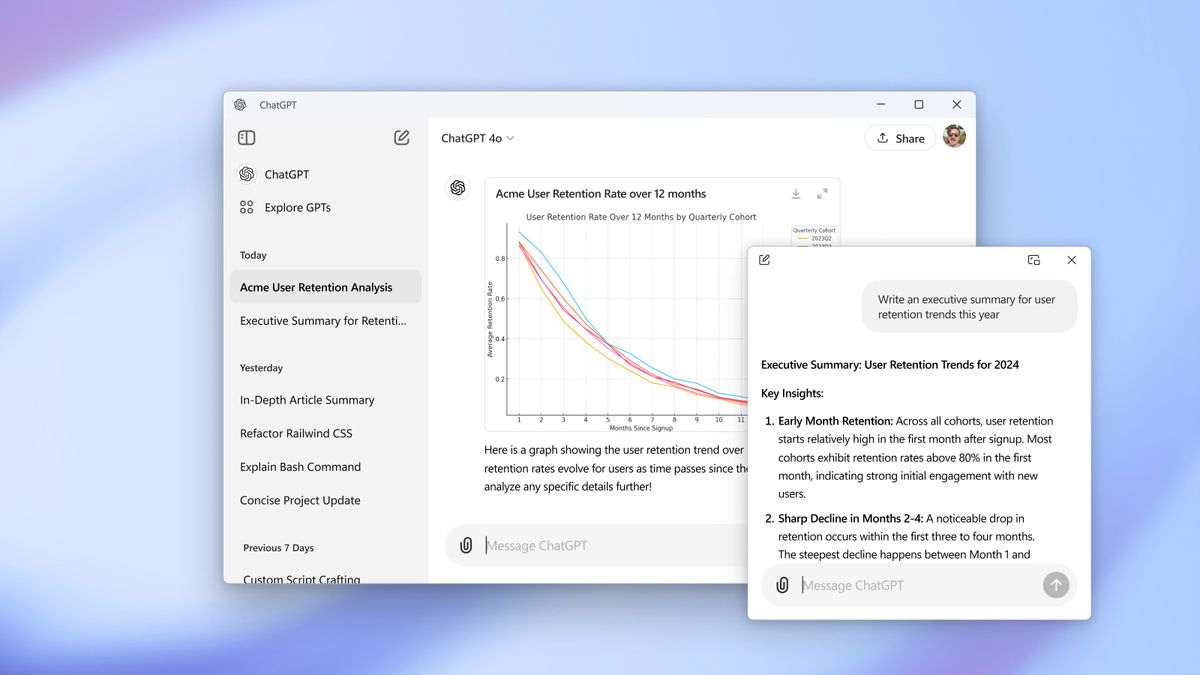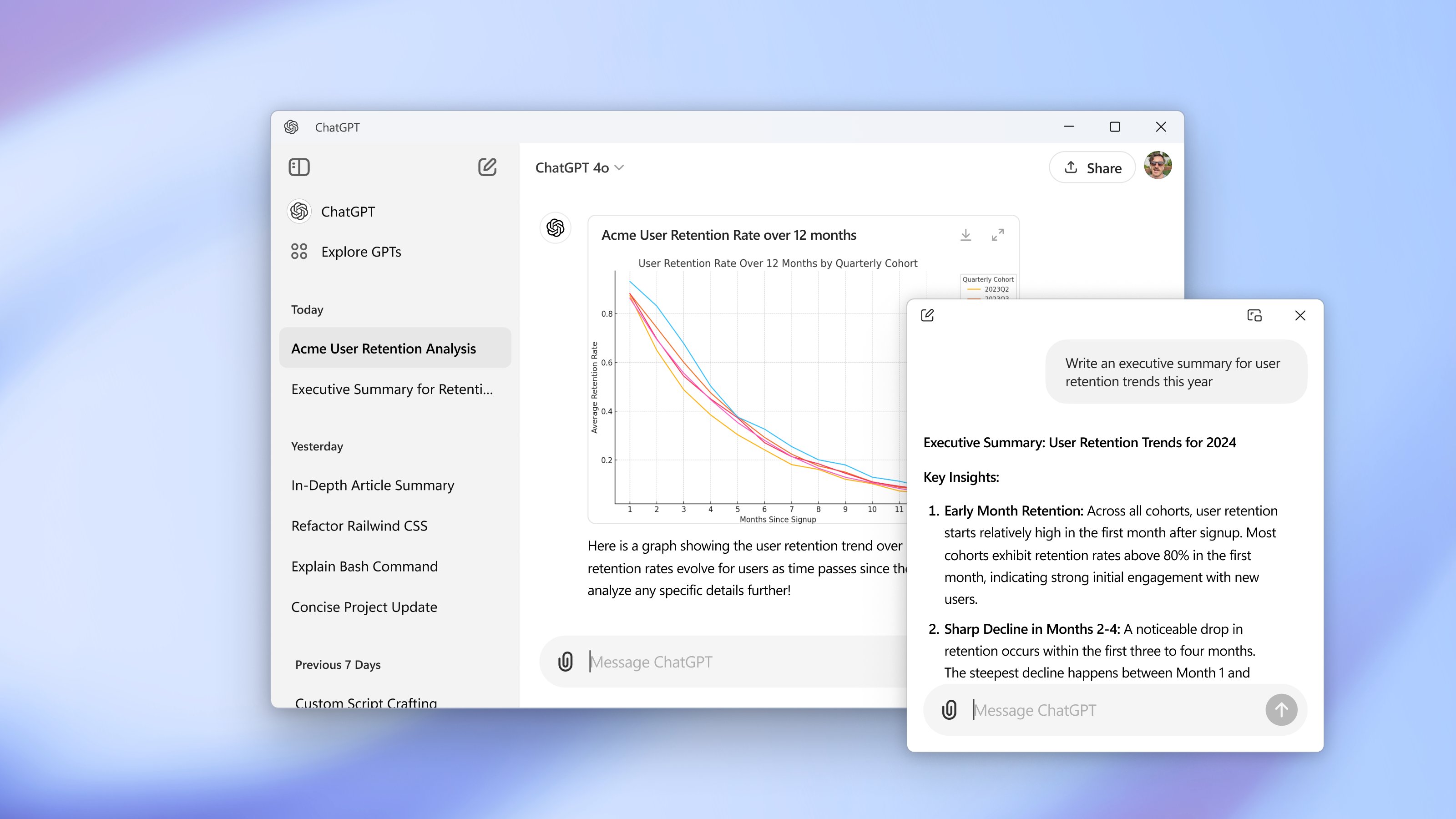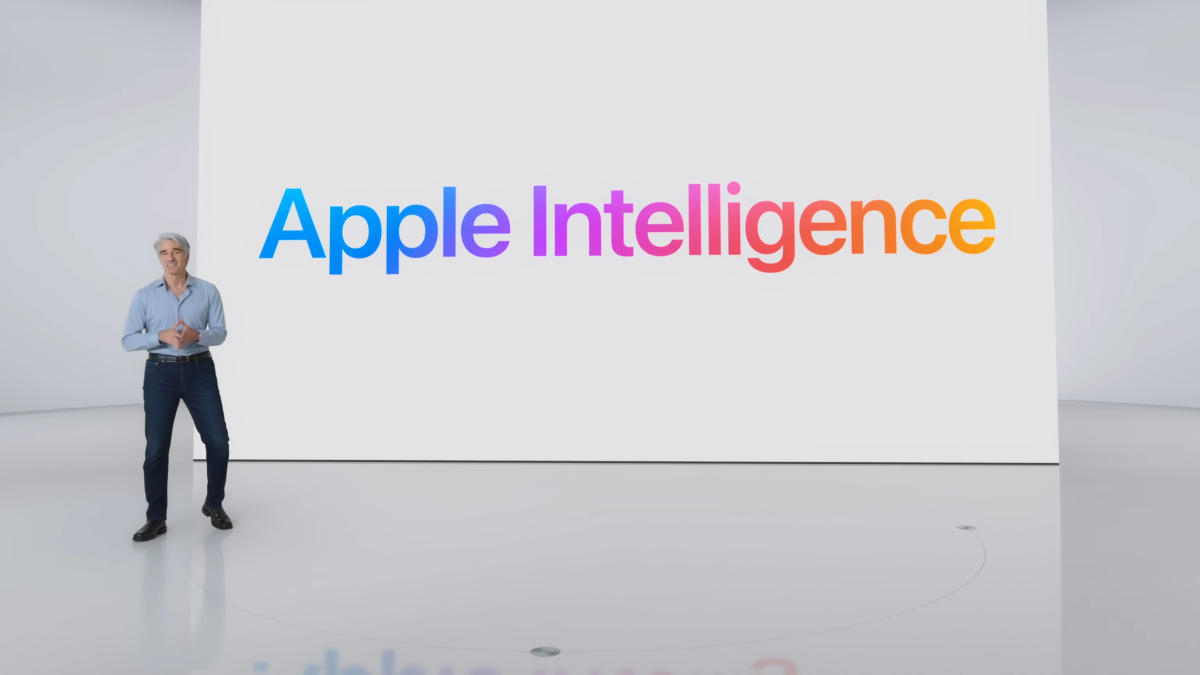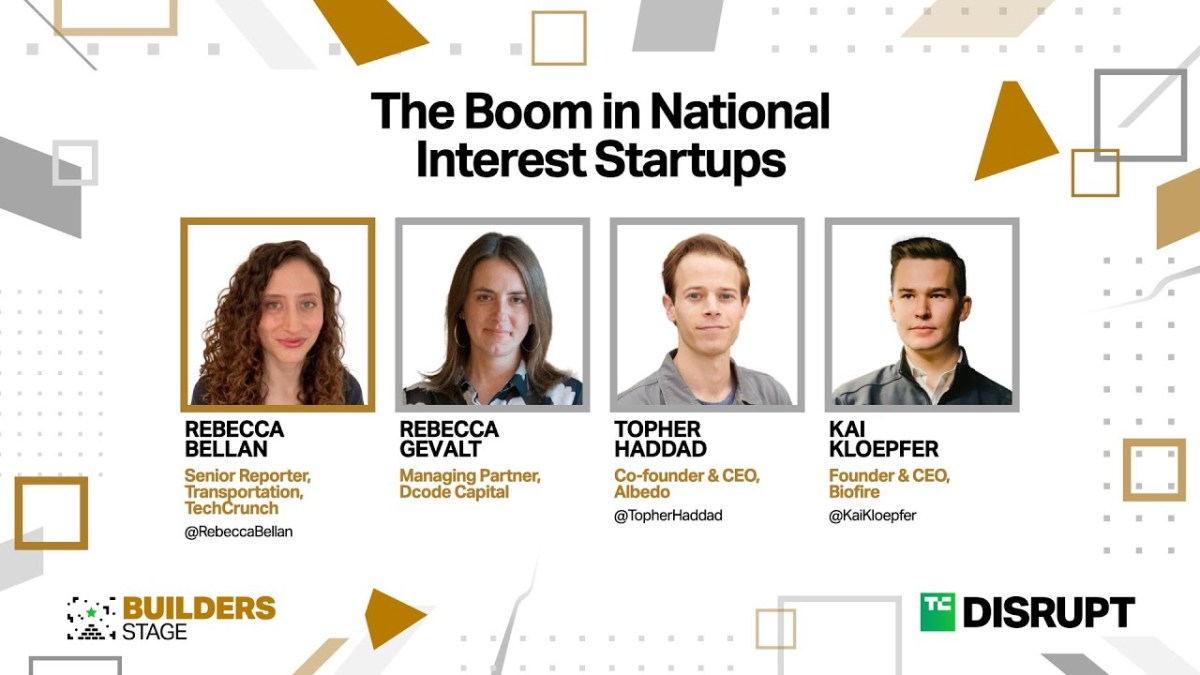The fallout from the non-endorsement of Kamala Harris at The Washington Post is here: more than 200,000 canceled subscriptions, NPR reports. This is about 8 percent of the paid subscriber base, and the number of cancellations is still growing.
Technology
Jeff Bezos is no longer relentlessly focused on customer satisfaction

To put that in perspective, in an Oct. 15th story about Post CEO Will Lewis’s strategy to get more paying subscribers, The New York Times reported that the Post had added 4,000 subscribers since the beginning of 2024 through September. Like, I am actually flabbergasted: that’s fifty times as many cancellations in one weekend as The Post earned in the better part of a year.
“This is obviously an effort by Jeff Bezos to curry favor with Donald Trump in the anticipation of his possible victory.”
Now, there have been multiple reports at this point — from NPR, The Columbia Journalism Review, and The Washington Post itself — that the call to stop endorsing candidates came from Jeff Bezos himself. The same day as Lewis’s bizarre announcement of The Post’s non-endorsement, executives from Bezos’s space company, Blue Origin, met with presidential candidate Donald Trump.
Lewis would like us to leave poor Bezos alone. Bezos “was not sent, did not read and did not opine on any draft,” the CEO told CNN in the kind of statement that we in the business know as a non-denial denial. That is — it is a carefully worded recitation of things Bezos did not do. It doesn’t deny that Bezos made the call for no endorsement. And today, The New York Times’Ben Mullin reported that Bezos had expressed reservations about a presidential endorsement as early as September.
The blowback has been so intense that Bezos has taken it upon himself to explain the decision in The Washington Post. “I would also like to be clear that no quid pro quo of any kind is at work here,” he wrote. Instead, he claimed that it was “a principled decision.” That it was announced so close to the election was just a little whoopsy-doodle that Bezos claims was “inadequate planning.”
To back the decision, Bezos writes about the nosedive trust in media has taken. It is true that fewer people trust the media than before, but that may also be because people don’t necessarily know as many reporters anymore. In the days of healthy local journalism, reporters were your friends and neighbors, normal people that you interacted with on a regular basis at the grocery store. That is no longer the case; journalists are thin on the ground, and wildly outnumbered by PR people. Fox News, in particular, has gone out of its way to sow distrust. Dumping on other publications is a prime strategy for drumming up Substack subscriptions — just ask Bari Weiss.
But I don’t expect the founder of Amazon to know this history any more than I expect him to understand how to operate The Post’s CMS. And besides, the trust in media thing is a distraction. The op-ed is a clear attempt at damage control — an attempt to stop the bleeding. It is too little, and too late.
I suppose I should mention the various government contracts Bezos’s other businesses have — among them, Amazon’s $10 billion NSA contract and Blue Origin’s $3.4 billion NASA contract. Trump has previously targeted Bezos for The Washington Post’s reporting. A columnist who quit the Post over the decision, Robert Kagan, told CNN, “This is obviously an effort by Jeff Bezos to curry favor with Donald Trump in the anticipation of his possible victory.” Kagan pointed to the business contracts as motivation.
Bezos would also like us to leave poor Bezos alone. “I would also like to be clear that no quid pro quo of any kind is at work here,” he wrote. “Dave Limp, the chief executive of one of my companies, Blue Origin, met with former president Donald Trump on the day of our announcement. I sighed when I found out, because I knew it would provide ammunition to those who would like to frame this as anything other than a principled decision. But the fact is, I didn’t know about the meeting beforehand.”
Bezos made his bones at Amazon by relentlessly focusing on customer satisfaction. Over and over, he told people to focus on making customers happy. Here’s a fun quote from his 2016 letter to shareholders:
There are many ways to center a business. You can be competitor focused, you can be product focused, you can be technology focused, you can be business model focused, and there are more. But in my view, obsessive customer focus is by far the most protective of day one vitality.
That’s probably good advice for running a business, and it appears to be advice neither Lewis nor Bezos himself took. By spiking a presidential endorsement, Bezos has created the appearance of a conflict of interest — and in journalism, that is as bad as an actual conflict of interest because now you’ve lost the trust of your audience.
(Lewis, though, is no stranger to journalism, since he does have experience as an editor. However, some of that experience is being investigated in the Sunday Times phone hacking scandal, so maybe he’s not the best person to consult on these matters.)
The blowback is bigger than The Post
Still, if there is one thing Bezos is known for, it’s his cutthroat approach to capitalism. And here, he has failed at that, too. The customers have been speaking very clearly: NPR reports that three of the top 10 stories on the Post’s site Sunday were from staffers pissed off about the killed endorsement. The most-read was by the paper’s beloved humorist Alexandra Petri: “It has fallen to me, the humor columnist, to endorse Harris for president.” When I checked The Post’s site again today, the top two stories were about the controversy.
“Now more than ever the world needs a credible, trusted, independent voice,” Bezos writes. This is true. It’s also why he shouldn’t have hired Will Lewis in the first place. A guy involved in a phone hacking scandal is simply not credible. Between Lewis and the pulled endorsement, it’s clear Bezos does not understand his customers. I wonder if he even understands credibility.
The blowback is bigger than The Post. One thing our tech overlords have been very unhappy about lately has been the government’s renewed approach to antitrust under Joe Biden. What the Post scandal highlights — besides Will Lewis’s incompetence — is exactly how many businesses Bezos owns, and how conflicts of interest could arise. He has skillfully drawn attention from normal citizens to overreaches of power in business. There is, of course, a solution: breaking up businesses that have gotten too big.
Well, I guess that’s a lesson for us all. This is what happens when you focus on yourself and not on the customers. Not only do they leave you in droves, but they may actually revile you enough to be politically dangerous.
Update, October 28th: Adds Jeff Bezos’s Washington Post op-ed explaining why he chose to shoot his own newspaper in the foot.
Technology
4 things you can do in the ChatGPT Windows app that it does better than Copilot


Now that ChatGPT has its own Windows app, the question of whether it’s worth picking over Microsoft’s Copilot, which is already threaded throughout Windows 11, is front and center.
With the two sharing the stage, you should learn where ChatGPT shines versus Copilot. So, we’ve assembled four reasons why you might prefer the ChatGPT app on Windows and where it stands out.
Instant Access with Alt + Space
Speedy access to a tool is always a major selling point, which is why Copilot’s native home on Windows is appealing. But, with the ChatGPT app, you just have to press Alt + Space to open a chat window instantly. That’s true regardless of what you’re already doing or if you’re juggling a bunch of other tasks.
Imagine you’re writing a document and want to ask AI for help improving your word choice or checking the grammar. You don’t need to open the Copilot app; just press Alt + Space, type your query, and get an answer. Copilot often requires opening an app; even with a single button to open it, it still feels a little slower than the ChatGPT app.
Accessing Chat History Across Devices
As someone who uses multiple devices that don’t all use Microsoft operating systems, the most obvious benefit of the ChatGPT app is that it syncs my account and chat history to the web portal, my mobile app, and anywhere else I use ChatGPT. If I am using ChatGPT on my desktop computer with the Windows app and want to continue the conversation while taking the train, I can pull the conversation up and keep going, and vice versa, once I return home.
On the other hand, Copilot is pretty integrated into Microsoft 365, which is fantastic for staying within Word or Excel but doesn’t let me carry a conversation from my desktop to my mobile. So, if I ask Copilot to help brainstorm some ideas for a party, I’ll need to wait until I’m on another Windows device before I can continue the conversation. ChatGPT’s ability to stay connected across devices makes a big difference if you work on the go and want to keep all your AI conversations contained in one platform.
Image Analysis for Visual Projects
One of the best ChatGPT features is its ability to analyze images you upload. Drop in a photo, and the AI will interpret what’s going on in the image – something Copilot doesn’t currently offer.
I’ve regularly used this feature on the mobile app with complex charts or multiple seemingly contradictory parking signs on a street post, even with recipe photos to work out the ingredients. This kind of image-based assistance isn’t part of Copilot’s toolkit yet, so when visuals are all you have, and words aren’t enough, ChatGPT is the go-to option.
Plugin and GPT Store Access (Coming Soon)
This is still more anticipation than actual reality, but the ChatGPT app for Windows will get access to OpenAI‘s GPT Store along with the plugins built by other companies to work with the AI chatbot. That means more customization and new ways to use the AI chatbot are on the horizon. For instance, you might link a content calendar plugin to ChatGPT to get its responses and other specialized tools.
Copilot is great for how it blends with Microsoft’s apps, but it otherwise doesn’t have the kind of flexibility provided by the GPT Store (albeit still speculatively for now). So, while both the ChatGPT Windows app and the built-in Copilot provide Windows users with many AI tools and features, ChatGPT has enough unique perks to make it more enticing in many cases. That could certainly change as Microsoft continues to improve Copilot, but I suspect you’ll see a spike in Windows ChatGPT usage and a drop in Copilot for the foreseeable future.
You might also like…
Technology
M4 Mac mini appears to have just been leaked by Amazon

Just prior to Apple unveiling the new Mac mini in a special announcement this week, Amazon appears to have accidentally spilled the beans.
Spotted by MacRumors on Monday, the new listing on Amazon’s U.S. website for the just-unveiled M4 iMac includes a section titled, “Which Mac is right for you?”
The comparison chart (below), which looks like it’s been put together by Apple, includes the two-port M4 iMac, the four-port M4 iMac, an older M2 Mac Studio … and the new M4 Mac mini. Amazon has now removed the chart.

A minuscule image of the new Mac mini appears to reveal that the device, as expected, will include two front-facing USB-C ports, marking the first time for the machine to include ports on the front. MacRumors notes that these could also be Thunderbolt 4 ports, so we’ll have to wait for the official reveal this week for confirmation.
The listed specifications for the revamped Mac mini appear to confirm that the machine will come with M4 and M4 Pro chip options, and a maximum 14-core CPU and a maximum 20-core GPU.
The chart also suggests you’ll be able to buy it with up to 64GB of RAM — twice the current limit — and as much as 8TB of storage, which is the same as the current model. And it also appears that the M4 Mac mini will continue to come in silver only.
Apple has chosen this week to unveil refreshed PCs and laptops, beginning on Monday with an iMac desktop updated with the new M4 chip and available in new colors. It’s also started rolling out its first AI-powered Apple Intelligence features for compatible devices. Be sure to check back as more details emerge throughout the week.
Technology
Microsoft accuses Google of lobbying against its cloud business

Historically, Google and Microsoft are not the best at getting along with each other. Both companies have had feuds in the past, with some “aggressive” moves against each other’s products. Now, a new pitched battle between two of the biggest players in the tech industry seems about to begin. Microsoft claims that Google is developing “shadow campaigns” to undermine its cloud business.
Rima Alaily, Microsoft’s deputy general counsel, launched the accusation through a blog post. Microsoft believes that Google is financing pressure groups or lobbies to sell a negative image of its cloud services and business model to the authorities. Google could be forming the so-called “astroturf” group with that goal, including tech companies and communication agencies.
Google could be financing lobbying against Microsoft’s cloud business
“Google has gone through great lengths to obfuscate its involvement, funding, and control, most notably by recruiting a handful of European cloud providers, to serve as the public face of the new organization. When the group launches, Google, we understand, will likely present itself as a backseat member rather than its leader,” Alaily says.
The Redmond giant reportedly learned of the Google-funded lobbying from a company invited to join the group. “One of the companies approached, who ultimately declined, told us that the organization will be directed and largely funded by Google for the purpose of attacking Microsoft’s cloud computing business in the European Union and the United Kingdom,” reads the blog post.
Windows Server licenses, the source of the problem
The whole situation stems from Google’s complaints about Microsoft’s licensing fees for Windows Server. The Mountain View giant considers the fees for using Windows Server-based developments on cloud providers other than Microsoft to be an anti-competitive measure. Such fees do not apply when using the company’s Azure servers. Amit Zavery, vice president of Google Cloud, claims that the fees are up to 400%.
In September, Google sued Microsoft before EU antitrust regulators over the matter. The company’s goal may be to convince the authorities that Microsoft’s practices are anti-competitive. Google claims that the abusive fees aim to compel the use of Azure servers rather than permitting the participation of alternatives.
Microsoft, for its part, asserts that lobbies funded by Google attempt to influence ongoing legal proceedings. The North American company cites the case of Cloud Infrastructure Services Providers in Europe (CISPE) as an example. Microsoft reached a settlement with CISPE in 2022 over licensing issues. However, they claim that Google offered CISPE up to $500 million to reject the settlement.
Microsoft believes it is doing the right thing
Microsoft is convinced that it is within its rights to charge such fees. “Fundamentally, Google’s argument is that it should not have to pay Microsoft when it builds and offers cloud services using our intellectual property – namely Windows Server – if customers have otherwise purchased the same software for a very different use, i.e., on their own server,” the blog post says.
The latest major legal showdown between Google and Microsoft ended in 2021. However, all signs point to friction between the two being about to escalate. In previous conflicts, Google has been tough on Microsoft developments, such as Windows Phone. The company refused to develop Windows Phone native apps for services as popular as YouTube, for instance.
Technology
Apple Intelligence is coming to EU iPhones and iPads in April

Folks in the European Union finally know when Apple Intelligence will be available on their mobile devices. Apple told EU users on Monday that its AI suite will arrive in April 2025. The first Apple Intelligence features, including Writing Tools and AI notification summaries, are now available for English speakers elsewhere.
Apple announced the EU release date in a press release for the European Union (via 9to5Mac). Translated from Italian, the news post reads, “In April, Apple Intelligence features will begin to be distributed to iPhone and iPad users in the EU.”
The article notes that the first wave of Apple Intelligence is already available for EU users in macOS Sequoia 15.1. That’s because Apple used the Digital Markets Act (DMA) as its rationale for delaying its EU AI. In this case, the regulations only affect iPhone and iPad software, not macOS.
On Monday, Apple also confirmed that its AI suite will be available in more languages in April and throughout the year through a software update. These include Chinese, Korean, French, Japanese, English (India), English (Singapore), Italian, Portuguese, Spanish, German and Vietnamese. In December, Apple Intelligence will become available in English variants for Australia, Canada, Ireland, New Zealand, South Africa and the UK.
Apple Intelligence is getting a tiered rollout. Today’s first batch in iOS 18.1 (for those outside the EU) includes Writing Tools, live transcriptions, notification summaries and more. iOS 18.2 and macOS Sequoia 15.2 will bring additional features like ChatGPT integration, Genmoji, Visual Intelligence and Image Playground. That software is currently in beta and is expected to arrive with an official release in December.
The only catch is you’ll need a compatible device. On iPhone, that’s limited to the iPhone 15 Pro, iPhone 15 Pro Max and the iPhone 16 series. M-series iPads, Macs, and the new seventh-gen iPad mini are also supported.
Update, October 28 2024, 4:09PM ET: This story has been updated to correct the timeframe of the release of Apple Intelligence in more languages, clarifying that it’s coming “in April and throughout the year” and not just “in April.”
Technology
Epic Games CEO Tim Sweeney’s path to the open metaverse is via enlightened self-interest

Join our daily and weekly newsletters for the latest updates and exclusive content on industry-leading AI coverage. Learn More
Epic Games CEO Tim Sweeney still believes that the path to the open metaverse will yield bring together the entertainment, games and technology industries together in a bright future.
But to get there, Sweeney believes the monopolistic platform owners need to embrace enlightened self-interest. He spoke about these topics with me in a recorded video fireside chat that we aired today at the sold-out GamesBeat Next 2024 event in San Francisco.
Sweeney has pressured the major platforms like mobile leaders Google and Apple to give more favorable terms to game developers, as he doesn’t believe the game industry can invest in the metaverse or its future so long as those companies are taking 30% of every mobile game transaction. Sweeney is just one of a number of speakers talking about the metaverse, the future of games, and new technologies at our event. But he’s the only one engaged in litigation challenging the tech and game platforms to play fair. And he’s optimistic about the progress in regulatory and antitrust efforts.
“We’re turning the tide,” he said in our chat. “And when we began this journey, a lot of people in 2020 when we launched the Free Fortnite campaign and started challenging Apple and Google through really aggressive litigation, a lot of people were only starting to think then about the possibilities for what these devices could be like as open platforms. But now we’re well under our way in transforming the world.”

He said earlier at the Unreal Fest that Epic is in better financial shape than it was a year ago, when Epic had to lay off a lot of staff. Sweeney said the company spent the last year rebuilding. Fortnite reached a peak last holiday season of 110 million monthly active users, and Sweeney said the Epic Games Store is seeing record success.
But he notes the recent attempt to return the store and Fortnite to the official stores of Apple and Google have met with limited success, as the 15-plus questions posed by the platforms has stopped about 10 million of the 20 million trying to reach the store from completing their attempts. Sweeney hasn’t spoke at one of our events since 2021 (though we have done interviews at places like GDC), and so I asked him a wide range of questions in our fireside chat.
We addressed topics about his views about the path to the open metaverse, the growth of user-generated content on Fortnite, Microsoft’s adoption of Unreal Engine 5 for Halo, the new Fab store for 3D assets from multiple engine providers, the legal attempts to liberate Fortnite around the world, the place for platforms (which he calls “monopoly rent collectors” ) in the open metaverse, Epic’s $1.5 billion investment from Disney and the mission of building a Disney universe connected to Fortnite, the impact of AI on game development and the advances that Unreal Engine 6 could bring to gaming.
Sweeney foresees that Unreal Engine 6 could enable thousands of players to inhabit a shardless or nearly shardless infrastructure, meaning that thousands of players could join each other in a battle royale match. This kind of technology will be what the metaverse is all about. Unreal Engine 6 is likely to bring together the advances of Unreal Engine 5 with the UGC-focused advances of Unreal Editor for Fortnite (UEFN).
He mentioned more than once the importance of Metcalfe’s Law (named after networking pioneer Bob Metcalfe), about how the value of a network or social experience grows in proportion to the number of friends you can connect with. And he noted how the metaverse-like cross-promotions of brands inside Fortnite could expand the audience not only for the game but the reach of the brands as well. I appreciate that Sweeney doesn’t shy from controversy and he answers questions without hesitation. And he continues to give guidance that Sweeney to developers so they can see the road ahead.
Here’s an edited transcript of our interview. You can also watch the talk on the embedded video.

Dean Takahashi, lead writer for GamesBeat: This is Dean Takahashi. I’m the lead writer for Gamesbeat at VentureBeat. I’m very happy to be here with Tim Sweeney, the founder and CEO of Epic Games, and we’re talking about the path to the open metaverse here, which is our favorite subject we’ve been talking about for like 15 years or so. It’s interesting how it comes and goes, but definitely Neil Stephenson, who was just here, thought of this 30 years ago. It makes me feel a little old. Tim, the last time you and I sat down, we talked about the open metaverse in 2021 and how it will require enlightened self-interest from major companies. So what’s changed over the past three years and what stayed the same?
Sweeney: We’ve seen a lot of companies come together to contribute code and content into Fortnite and other metaverse ecosystem efforts The Fortnite crossovers have been really telling about the willingness of companies to partner together in ways that they haven’t done traditionally. The massive crossovers of Star Wars and Marvel characters into Fortnite. Both Sony and Microsoft putting content into Fortnite. Putting signature characters from Halo and God of War.
All of the major music labels agreeing to put their music into Fortnite and rekindle interest in music through Fortnite’s music modes and (jam stage mode). All of the film and television industries found it incredibly valuable and mutually beneficial to do these crossovers because content comes into Fortnite. Fortnite players who might not have otherwise been aware of their stuff become really interested in it and watch the movie. The movie customers who might not have played Fortnite come into Fortnite and everybody benefits from the uplift.
Takahashi: On that enlightened self-interest part, you have committed yourself to the open metaverse, but how do you feel about everybody else?
Sweeney: Interestingly, what we might think of as the traditional media companies, film and television and music labels and so on, have been way, way more open to working than traditional game developers. I think a lot of game companies still look at themselves as building a moat and trying to play medieval warfare. They’re raiding each other’s castles and defending their own.
Whereas the media companies have seen a whole lot more of the complementarity of connecting worlds and audiences together in the way that we have. I think that’s starting to change, and we’re seeing increased interest among all game developers. And we also have a lot of work to do on our end, building more and more Unreal Engine features to help other companies connect into an open metaverse.
Right now, the the real core metaverse stuff we’ve built has been in Fortnite and we’ve done some cool things but they’re only in Fortnite right now and one of the big strategies we have for the next few years is to move more and more of that into Unreal engine as it evolves from Unreal Engine 5 into Unreal Engine 6.
Epic’s Fab store for 3D assets

Takahashi: Speaking of some new things, Fab is Epic’s new marketplace where creators and developers can discover buy and sell and share digital assets. It’s launching now can you talk about that?
Sweeney: We realized there are two big problems with game development. One is the amount of programming and code development work is immense. And so the more tools and systems we can build for that, the better. But actually, the bigger cost factor nowadays for most developers is creating content. Digital humans at the highest level of quality in the industry are extremely expensive or have been traditionally. And just building out the massive set of assets required for a game is incredibly expensive.
And so we’ve made a broad set of investments in helping make content development easier and cheaper for people, both through helping improve people’s productivity, but also creating this marketplace. Fab is a new central marketplace that serves not only Unreal Engine customers, but developers using Unity or Godot or any of the digital content creation tools, people in the game business, but also in the film and television business, and automotive and architecture and everything else.
We bring together all the world’s best content into a modular store that sells and licenses content to anybody who wants to use it. So the pitch there is that you can reduce the cost of developing a piece of content by a factor of 100 by just buying a license to it instead of building it all anew. And though every developer is always going to build a bunch of unique content for their game that really defines their IP and their characters, I think 90% of the content in most games is like rocks and trees and things that how we can be shared across packages and the goal is to add more and more capabilities for that.
Will the metaverse have unified content?

Takahashi: The fact that this marketplace has Unity content in it does make me think it’s like a step to something broader. How does it sort of fit into your broader metaverse thread?
Sweeney: My expectation is that the gaming industry, which is right now really quite archaic if you look at it, every single game in the world is a separate downloadable file you install on your computer or device. You have to log in, create a new account. You find a different set of friends in every game for every developer, and it’s just a lot of pain.
Bringing all this stuff together is critical, and we see all engines playing a part in this. I think a game engine today is analogous to a web browser in the metaverse. A game engine is ultimately the program you’re going to run to get into these experiences, to connect to servers, running on a variety of different technology bases, and connect in and play. And so we could see a future in which you have live games running. implemented on open standards and players using Unreal-based browsers or Unity-based browsers would would go in and be able to play and we’d have a decoupling of the the content of the game from the shell of the program that runs it.
And that could play a really economizing role in game development because it’s enormously expensive and painful to maintain a game on seven platforms and you continually ship it and do bespoke debugging and engine integration with a huge team most developers would have dozens of people dedicated to maintaining a cross-platform product.
It sure is a whole lot easier to ship content into Fortnite right now if you’re building standalone content using the Unreal Editor for Fortnite (UEFN) tools. There’s now an economy there that’s really quite lucrative for creators but imagine that strategy writ large in which in the future more and more games move to a connected metaverse type of experience.
And all the power and all the features of Unreal Engine and all the other engines are available in these experiences and when you you you’ve installed it once then you could go to any place seamlessly Instead of having to install a new map make new friends and stuff, voice check chat and other features It’s all right there and you just take it as you go from place to place with you and your friends all together.
Takahashi: As you make the journey, I could see it would seem a little crazy to have Unity, Minecraft, Roblox and UEFN assets all together in one place. Even crazier that one day maybe you could use them interchangeably in the same games.
Sweeney: If you look at the, before the internet became a mainstream consumer feature, there were some online information services. I’m old enough to remember this, but there was like America Online and CompuServe and all these proprietary services that had their own graphical user interfaces.
And it was super archaic. Gaming is actually starting to feel similarly archaic. It sure would be a whole lot easier if you didn’t have to go through that installation and set up process multiple times and relearn controls every time and do everything else.
And we’ve got to both make social gaming easier and more accessible so that more people can bring their friends together with them to every experience they play across platforms. And we also have to make game development more economical. And that means helping developers build as good a game as they could. today build with their 300 million dollar budget with a much much smaller budget by reusing technology and content and adding on rather than building everything anew.
Fortnite gets out of jail

Takahashi: The metaverse isn’t really here yet but your fight for open platform certainly is and it’s been a couple of months since you launched the Epic Games Store globally on Android and on iOS in the EU. How’s it all going?
Sweeney: We’re fighting super hard and we’re getting traction. It’s not as much as we hoped but it looks very promising. So far, we’ve had 20 million users come to our website to try to install the store. And 10 million users made it through, installed the Epic Games Store on iOS and Android.
Takahashi: Wow.
Sweeney: And Apple and Google — their big trick that they play on users is to pop up scare screens saying, ‘Oh, this software, the Epic Games Store, is from an unknown developer. We don’t know who they are. And it might harm your device.’
Even though they know that’s a lie. They know who we are. I’m sure they do by now. And they know our software won’t harm the user’s device. But they pop up all of these scare screens and introduce fiction. So we made a list of the 15 steps you have to go through on Android to get the Epic Games Store on your Android device. And it’s really horrible.
And Samsung just added five more. Now there’s 20 steps. And these court battles are going to be necessary where we litigate against companies that are using misleading and unfair consumer practices to try to disadvantage their competitors. Regulation is going to be needed and regulators are taking action.
It’s hard to count how many antitrust suits are going against Google around the world at any time. The European Union has passed major legislation to take this on, as has the United Kingdom, coming into effect next year, and Japan, and many more countries on the way.
We’re turning the tide. And when we began this journey, a lot of people in 2020 when we launched the Free Fortnite campaign and started challenging Apple and Google through really aggressive litigation, a lot of people were only starting to think then about the possibilities for what these devices could be like as open platforms. But now we’re well under our way in transforming the world. And regulators around the world intend to see it through. Local competition and global competition necessitates it.

Takahashi: It is interesting to see open platforms have legal and regulatory traction now right and that path for the metaverse is something you guys have cleared. I wonder does the metaverse actually need intermediaries or platforms or filters of some kind? What is their role when we do have an open metaverse?
Sweeney: The role should be like Microsoft Windows. You buy a device, you pay for the device, and that pays for an operating system license, and then you own the device, and it’s yours, and you can do what you want with it, and you’re not forced to pay junk fees to Apple and Google every time you go through and to install new stuff or buy new stuff.
So removing the taxation while supporting any quality curation or anti-malware campaigns they have is the goal. They can play a valuable role in the ecosystem. The problem is they’ve just overstepped their bounds to collect monopoly rents that they don’t deserve and shouldn’t be taking.
And if we bring that back in line and restore the open platform status quo, then we’ll have a much more efficient economy. It’s hard to state how badly off the rails an economy goes, because especially a digital economy, when you take 30% of the revenue off of the top. Because gaming is a very competitive place.
Very, very few game developers in the world, not even Epic by far, make a 30% profit margin on their game’s revenue. And so when they take 30% off the top, it’s utterly demolishing the potential the developers have to make a profit and reinvest their profits in growing their business. But it’s also forcing developers to raise their consumer prices because if you’re making less than a 30% profit margin and you have to pay a 30% tax, you’ve got to raise your price or go out of business.
Takahashi: So when we think about the state of the gaming industry, what do you see as the revenue opportunity for metaverse applications beyond Fortnite, Roblox, and Minecraft which are already successful pieces of the meta?
Sweeney: I think you can look at the entire digital game economy and if you believe in this thesis of the metaverse or of Metcalfe’s Law. In general, the idea is that players will increasingly gravitate towards big experiences that have lots of games within them in which they are constantly surrounded by their friends and can move from experience to experience with their friends.
It has voice chat and with the social experience. I mean if you buy into that which the Metcalfe’s Law dynamic which has driven the growth of social media the internet itself and pretty much every other exponential growth that curve involving people — if you believe that — then you would have to conclude that at some point in the next 15 years, say, the metaverse and that sort of game will probably constitute the majority of game industry revenue.
In the very early days of mobile, people started making predictions maybe someday mobile will outgrow PC and console. And that was initially judged insane, but actually there’s a trend there that’s irreversible. And I think that trend is irreversibly led toward the metaverse. Metcalfe’s Law and the social dynamic that makes it all work and makes it better and more fun.
Halo’s switch to Unreal Engine 5

Takahashi: Switching gears a little, Microsoft made a big move with Halo moving to the Unreal Engine recently and I wonder what that tells you about sort of the state of making games in 2024. we know it’s hard but what else is this telling well.
Sweeney: So the Halo Studios team is some of the best developers on earth. And Microsoft has a number of the best studios on earth using Unreal Engine to build amazing games. I think we’re just seeing a shift in the industry dynamic. In the early days, any company with a successful profit stream could build their own engine and maintain an engine team.
Initially, they were a few guys. And then 30 engineers, and then 300 engineers. And as the table stakes for engines goes up and up, it’s becoming less and less economical for lots of companies to duplicate each other’s work by maintaining their own.
And we’ve seen it. We made a really, really sustained, huge investment push. Once Fortnite took off, we really started plowing a lot of our profits back into making Unreal Engine better and more powerful and adding in more and more features and capabilities. And like Nanite, the micro polygon geometry, and Lumen, and the new technology to have basically infinite lights at your disposal, and mega lights, and metahumans.

Many more things are the result of making investments that just wouldn’t make sense, even for a publisher at the scale of Microsoft or EA. If you’re just one publisher serving your internal needs, it’s hard to compete with Epic because making our technology available to a very large swath of the high-end game industry.
Takahashi: I guess if you’re a developer, creatively you might fear that if I switch to a common game engine, then my game will look like every other game’s. I guess there must be some of that reluctance they have. Should we really make this leap?
Sweeney: I think you could really identify a look to an engine in Unreal Engine 3 days, 10 years ago or so, because of the particular lighting algorithms and things. But now there’s so much power in the hands of content creators. You have shaders that can introduce radically different visual styles. You have all kinds of stylization technology in there. really varied toolset that enables pretty much any art style from photo realism to Fortnite to 2D games or basically anything.
And I think we’re beyond those days where the engine has a substantial impact on the look of your game. Unless you’re talking about something that’s really left field like a voxel engine, I think Unreal Engine can produce anything that any engine can produce today and can produce the leading edge quality of what your hardware will support.

Takahashi: And do you think we’re getting closer to the metaverse?
Sweeney: Definitely. If you look at how everything’s grown, there’s been massive growth in Fortnite and features. It’s gone from kind of a little indie creation toolkit to a serious economy, paying up more than $500 million to developers so far and aspiring to pay up far more in the long run as it grows and some really powerful tools.
There’s a new (Epic-created) scripting language built for the metaverse called Verse. which has an increasingly powerful API set behind it. And that’s on Epic’s side. And on Roblox’s side, you see a massive increase in Roblox’s user base. Their tools are getting better. Their creators are doing more and more sophisticated things.
And you can see, in both worlds, there’s a really sophisticated creator economy developing in which there’s creators who have formed companies. You now have very specialized labor. It used to be one person doing everything. Now it’s the sort of specialization that occurred on a 30-person game development team is happening there. And they’re going up the food chain.
Some are getting venture capitalist investments. Some are merging. There are specialized contract shops. So you have a real industry developing there. And going to Unreal Fest, our annual event, we launched the Unreal Editor for Fortnite in the creator economy last year. And we had some really awesome creators show up. And they were aspiring to build businesses. And we showed up this year.
You can see a massive transformation. Much bigger teams, serious investment. Everybody showed up handing out swag because they want to recruit all the other people there too. And you can see a real economy developing. There are a number of investors there who’ve made investments in creators, helping fund them and grow them. And differentiation of developers, sometimes working with publishers to provide marketing, all kinds of service companies helping them.
It’s really happening at a scale. And if you add up the number of active users there, I think you can find 700 to 800 million monthly active users and metaverse-ish experiences maybe you can find seven or eight or nine of them depending on how you judge some of the some of the ecosystem-like games that are being developed like PUBG Mobile is looking more and more like a metaverse ecosystem now and others are too.
The AI question

Takahashi: How are you how are you expecting AI to impact something like Fortnite but also advances that are required for the metaverse?
Sweeney: AI is developing on an astonishing speed, and I think it’s going to transform absolutely everything and the way we do everything over the next decade. Different parts of it will come online and prove to be fruitful on different timescales, right? Like the 2D art, the pace of 2D art generation and text generation has just been utterly astonishing.
AI is becoming a better tool for learning than like rummaging through a book or reading Wikipedia or posting on a forum and it’s really getting incredibly smart and sophisticated the ability to generate code is told not at a serious level. It’s good at it. AI is helping in code generation, kind of at the educational level. It helps you learn stuff and onboard into a new API set.
But it’s not going to solve hard problems for you, at least not unless they’ve been solved many, many, many times before. And it’s just reconstructing that. And despite the pace of 2D asset generation, like Image AI, Dali or Stable Diffusion, the pace there has been astonishing, but it’s not been matched in 3D. There’s been some really interesting 3D voxel work, but it’s still orders of magnitude short in quality.
But at the level needed to compete for triple-A game business or Fortnite, generate assets at the level of Quixel Megascans. So maybe three years is the time frame for that. And when that happens, you’re going to find creators able to just go to Fab and buy content, but you could go to any company’s AI site who has that and probably generate content at a triple-A quality level that greatly economizes your project.
Both at the individual object level, but also at the compositing level. Because what you really want to say as an art director is, build me an entire city. And you’re also a game designer, and you now want to go around and change things and create interesting gameplay scenarios. You want to be the game director, while the AI doing a lot of the brute force work could be automated.
We’re very, very, very, very far from it. And at Epic, we don’t have any secret sauce here. We don’t have theories for how all those pieces will even fit together in the future. But the big thing that we’re seeing now is AI starting to learn to use tools. You can start to have AI feed code into a compiler, get error messages, and then start to fix bugs.
It’s not very good yet. But as AI learns to use tools, then everybody with an engine or tool is going to need to train AI to use their tools. rebuild parts of the interfaces of their tools really suitable for AI learning to use them and to repeat and follow instructions and generate massive amounts of training data for that. But once AI can learn tools, I think the sky’s the limit on what do we do.
Takahashi: Will we just tend to get everything faster? Like the metaverse will arrive faster, or do you think there’s other impacts?
Sweeney: Well, every major leap in technology has led to the rise of entirely new genres of games like the battle royale genre. It’s the best shooter mode ever devised by far. Thanks to Brendan Green for being inspired by the Battle Royale movie, the 1999 movie from Japan, and introducing the genre. It’s a game mode you really couldn’t have made 15 years ago.
Computers and consoles were just too slow. To have an open world environment with 100 players at a decent frame rate, feeding a live action game that feels real. So those increases in technology enabled new things. I think entirely new capabilities will come online and a bunch of step functions.
AI is going to power a bunch of them. If you increase the productivity of game development team or the economy at which a team can generate content by a factor of 10 or 100, suddenly you’d see massive new kinds of games that you couldn’t have envisioned before. Perhaps a team of 30 people could build Skyrim in six months. Perhaps that’s going to be possible within the next 10 years.
Takahashi: And also your battle royale could be thousands of players, right? Much larger.
Sweeney: Oh, yeah. There’s still massive problems outside of AI to solve. But one of the big things that’s been a bottleneck in Unreal Engine for its entire existence has been large parts of the engine are single threaded, like the gameplay logic.
Code written by tons of programmers, relatively fast, isn’t easy to single thread or distribute across many processors. And, if the amount of effort needed per line of code to ship an MMO is like 10 or 100 times higher than a game, and so MMOs [are built at a] glacial pace compared to to normal games and so we’re working on this software — transactional memory technology — to enable programmers to write what looks like normal single thread code and then find the parallelism by running it across a lot of threads and across a lot of nodes in a data center in order to find the parallelism for them.
The idea is most of your gameplay objects aren’t interacting with each other most of the time. So if you can speculatively run them all in parallel and see which updates actually conflicted with which other ones, then you could get progress on most of the objects in the game and then rerun the remaining ones and keep iterating on that as the game makes progress.
Hopefully without complicating the coding process, without making programmers’ lives more difficult. Massive, massive orders of magnitude increase in player counts. And so that’s one of the big bets we’re making on Unreal Engine 6. It’s going to take years to get to fruition, but we’re going really big on it.
The Disneyverse

Takahashi: So you announced this partnership with Disney earlier this year to build a new Disney universe connected to Fortnite. Can you talk about the vision for this?
Sweeney: We’ve had an awesome relationship for Disney for many years, ever since Fortnite took off and we started realizing the possibility to cross over without IP from the outside world. Disney and Marvel and their collection of studios has been an amazing partner.
They want to have a more Disney-centric version of the the metaverse that’s eventually going to be theirs and under their control and controlled by their IP. And we worked on a deal to partner to build it together and so Epic is like the prime contractor in building this Disney ecosystem. It’s going to evolve a lot over the years but what we’re going to see is like splitting the program we have, called Fortnite, into two different ones — one called Disney and one called Fortnite.
We’re creating a truly interconnected and interoperable economy in which we’re not only building experiences together, we’re also connecting the economy. So any cosmetic item you buy in Disney works in Fortnite, and any cosmetic items you buy in Fortnite, it’s appropriate for the ratings of a Disney experience, so it works in Disney.
Aand the value that the player spends are respected over an increasingly large ecosystem. That’s the core premise of it. And it’s really something that we’re using as our proof of concept to build the open metaverse.
Because what we ultimately want to do in the evolution of Unreal Engine 5 to Unreal Engine 6 is to enable any game developer to participate in the open metaverse in the way that we and Disney are working together to pioneer as early partners. And that eventually we want an open economy where everybody can run their item shop and their worlds.
They can use Unreal Engine or perhaps in the future use a different engine that’s interoperable and adheres to the same open standards. And with the kind of readily sharing model we defined for the Fortnite creator economy, which is really, really interesting and gets to the bottom of the economics of gaming in the metaverse, apply that across ecosystems.
What will Unreal Engine 6 be?

Takahashi: And you have Disney on one side connecting to Fortnite, but also UEFN on the other side. All the UGC, all the creators. You have these interesting relationships on both sides, really.
Sweeney: Yeah, that’s right. And one of the things that isn’t widely recognized in the industry is that when a company licenses Unreal Engine to use in their project, they’re not just licensing the engine to power their game.
They’re getting the right to use all of our tools. to build a user content ecosystem the way that we built ours. And so different teams have done modding in their games from the days of Ark Survival Evolved and Unreal Tournament onward.
But this gets much, much bigger and more powerful in the Unreal Engine 6 generation, when we have all of the things that we’re building in Fortnite right now in the Unreal Editor for Fortnite toolkit. Metaverse APIs and diverse scripting language, highly interoperable, downloadable content that works and is modular. These are all going to become general engine features available to everybody.
So we want to help every developer achieve what we’ve achieved with Fortnite, which is building a game. And if you want to, also build an ecosystem where everybody can contribute content to your game. Participate not just in your own economy, but in an open economy in which we’re players too.
Takahashi: And I know that with Unreal Engine 6, you’ve talked about this convergence of Unreal Engine and UEFN. But also… this notion of much better networking that would get you many many more players in the same experience. Do you think of Unreal Engine 6 as the metaverse?
Sweeney: Yes, that’s the hardest problem we’re solving in this generation. So far as we’ve found problems to solve. Sometimes amazing breakthroughs in graphics come along at times, sometimes unpredictably, at least by me. Though not to the rendering team who does the work.
But the funny secret about Unreal Engine is that the graphics team and the sound team rebuild the audio system and graphics system to be absolutely state of the art with every new generation. So you get radically improved new features in those areas.
But a lot of the core parts of the engine, like the networking and the scripting layer and the file management and stuff, has just kind of been there since the Unreal Engine 1 days and been incrementally improved without ever being refactored into something new and like truly modern.
That’s one of the big processes we’re going through with Unreal Engine 6 is updating very large amounts of the core to be an engine that’s suited for the metaverse and and let’s define that as a world in which not only are a bunch of game developers building games their games are capable of inter-operating.
They have content that interoperates and not only that but potentially millions of independent programmers and content creators are publishing their own modules of code and content they’re going to persist in the metaverse and be available to everybody and interoperate so that in a given world or part of the world.
You might be riding a vehicle built by one person and holding a gun built by another person and playing as a character that a third person built. Those people have never met or talked to each other, but because they’re adhering to the API standards that define these things, all of their content works together and continually evolves with everything changing live. as new content is published. Basically, a world that never shuts down, but just continually grows and improves.
Takahashi: Awesome. We could go on all day here, but you’re awesome, Tim. Thank you very much.
Sweeney: Thank you, Dean.
Source link
Technology
What’s driving the boom in national interest startups in Silicon Valley?

One fascinating trend these days is an area that has a number of names: national-interest startups, American Dynamism, New World.
These startups are creating technologies in areas that are meant to be built, used, and create jobs in the country of origin, like the US. They cover everything from aerospace and critical infrastructure to government, manufacturing and national safety.
This panel at Disrupt 2024 with Dcode Capital Managing Partner Rebecca Gevalt, Albedo Co-founder & CEO Topher Haddad, and Biofire Founder & CEO Kai Kloepfer digs into how far — and how fast — Silicon Valley can rebuild a nation’s foundations.Subscribe for more on YouTube: https://tcrn.ch/youtube
Follow TechCrunch on Instagram: http://tcrn.ch/instagram
TikTok: https://tcrn.ch/tiktok
X: tcrn.ch/x
Threads: https://tcrn.ch/threads
Facebook: https://tcrn.ch/facebook
Bluesky: https://tcrn.ch/bluesky
Mastodon: https://tcrn.ch/mstdn
Read more: https://techcrunch.com/
-

 Technology1 month ago
Technology1 month agoIs sharing your smartphone PIN part of a healthy relationship?
-

 Science & Environment1 month ago
Science & Environment1 month agoHow to unsnarl a tangle of threads, according to physics
-

 Science & Environment1 month ago
Science & Environment1 month agoHyperelastic gel is one of the stretchiest materials known to science
-

 Science & Environment1 month ago
Science & Environment1 month ago‘Running of the bulls’ festival crowds move like charged particles
-

 Science & Environment1 month ago
Science & Environment1 month agoMaxwell’s demon charges quantum batteries inside of a quantum computer
-

 Technology1 month ago
Technology1 month agoWould-be reality TV contestants ‘not looking real’
-

 Science & Environment1 month ago
Science & Environment1 month agoX-rays reveal half-billion-year-old insect ancestor
-

 Science & Environment1 month ago
Science & Environment1 month agoSunlight-trapping device can generate temperatures over 1000°C
-

 Technology4 weeks ago
Technology4 weeks agoUkraine is using AI to manage the removal of Russian landmines
-

 Football4 weeks ago
Football4 weeks agoRangers & Celtic ready for first SWPL derby showdown
-

 Science & Environment1 month ago
Science & Environment1 month agoPhysicists have worked out how to melt any material
-

 Science & Environment1 month ago
Science & Environment1 month agoLiquid crystals could improve quantum communication devices
-

 TV4 weeks ago
TV4 weeks agoসারাদেশে দিনব্যাপী বৃষ্টির পূর্বাভাস; সমুদ্রবন্দরে ৩ নম্বর সংকেত | Weather Today | Jamuna TV
-

 Technology4 weeks ago
Technology4 weeks agoSamsung Passkeys will work with Samsung’s smart home devices
-

 Sport4 weeks ago
Sport4 weeks agoBoxing: World champion Nick Ball set for Liverpool homecoming against Ronny Rios
-

 Science & Environment1 month ago
Science & Environment1 month agoQuantum ‘supersolid’ matter stirred using magnets
-

 Science & Environment1 month ago
Science & Environment1 month agoLaser helps turn an electron into a coil of mass and charge
-

 Technology4 weeks ago
Technology4 weeks agoGmail gets redesigned summary cards with more data & features
-

 News4 weeks ago
News4 weeks agoMassive blasts in Beirut after renewed Israeli air strikes
-

 MMA3 weeks ago
MMA3 weeks ago‘Uncrowned queen’ Kayla Harrison tastes blood, wants UFC title run
-

 Science & Environment1 month ago
Science & Environment1 month agoA new kind of experiment at the Large Hadron Collider could unravel quantum reality
-

 Technology1 month ago
Technology1 month agoRussia is building ground-based kamikaze robots out of old hoverboards
-

 News4 weeks ago
News4 weeks ago‘Blacks for Trump’ and Pennsylvania progressives play for undecided voters
-

 News3 weeks ago
News3 weeks ago▶ Hamas Spent $1B on Tunnels Instead of Investing in a Future for Gaza’s People
-

 News3 weeks ago
News3 weeks agoNavigating the News Void: Opportunities for Revitalization
-

 MMA4 weeks ago
MMA4 weeks agoDana White’s Contender Series 74 recap, analysis, winner grades
-

 Football4 weeks ago
Football4 weeks agoWhy does Prince William support Aston Villa?
-

 MMA4 weeks ago
MMA4 weeks agoPereira vs. Rountree prediction: Champ chases legend status
-

 Sport4 weeks ago
Sport4 weeks agoAaron Ramsdale: Southampton goalkeeper left Arsenal for more game time
-

 Business3 weeks ago
Business3 weeks agoWhen to tip and when not to tip
-

 Technology1 month ago
Technology1 month agoWhy Machines Learn: A clever primer makes sense of what makes AI possible
-

 Womens Workouts1 month ago
Womens Workouts1 month ago3 Day Full Body Women’s Dumbbell Only Workout
-

 Technology4 weeks ago
Technology4 weeks agoMicrophone made of atom-thick graphene could be used in smartphones
-

 Technology4 weeks ago
Technology4 weeks agoEpic Games CEO Tim Sweeney renews blast at ‘gatekeeper’ platform owners
-

 Technology4 weeks ago
Technology4 weeks agoMusk faces SEC questions over X takeover
-

 News4 weeks ago
News4 weeks agoWoman who died of cancer ‘was misdiagnosed on phone call with GP’
-

 Sport3 weeks ago
Sport3 weeks agoWales fall to second loss of WXV against Italy
-

 Science & Environment1 month ago
Science & Environment1 month agoWhy this is a golden age for life to thrive across the universe
-

 Science & Environment1 month ago
Science & Environment1 month agoQuantum forces used to automatically assemble tiny device
-

 Science & Environment1 month ago
Science & Environment1 month agoNuclear fusion experiment overcomes two key operating hurdles
-
Business4 weeks ago
DoJ accuses Donald Trump of ‘private criminal effort’ to overturn 2020 election
-

 Technology4 weeks ago
Technology4 weeks agoMicrosoft just dropped Drasi, and it could change how we handle big data
-

 Money3 weeks ago
Money3 weeks agoWetherspoons issues update on closures – see the full list of five still at risk and 26 gone for good
-

 Sport3 weeks ago
Sport3 weeks agoMan City ask for Premier League season to be DELAYED as Pep Guardiola escalates fixture pile-up row
-

 News4 weeks ago
News4 weeks agoCornell is about to deport a student over Palestine activism
-

 MMA3 weeks ago
MMA3 weeks agoKetlen Vieira vs. Kayla Harrison pick, start time, odds: UFC 307
-

 Sport4 weeks ago
Sport4 weeks ago2024 ICC Women’s T20 World Cup: Pakistan beat Sri Lanka
-

 Science & Environment1 month ago
Science & Environment1 month agoITER: Is the world’s biggest fusion experiment dead after new delay to 2035?
-

 Science & Environment1 month ago
Science & Environment1 month agoA slight curve helps rocks make the biggest splash
-

 News1 month ago
News1 month ago▶️ Hamas in the West Bank: Rising Support and Deadly Attacks You Might Not Know About
-

 Technology1 month ago
Technology1 month agoMeta has a major opportunity to win the AI hardware race
-

 News4 weeks ago
News4 weeks agoRwanda restricts funeral sizes following outbreak
-

 MMA3 weeks ago
MMA3 weeks ago‘I was fighting on automatic pilot’ at UFC 306
-

 Sport4 weeks ago
Sport4 weeks agoChina Open: Carlos Alcaraz recovers to beat Jannik Sinner in dramatic final
-

 Sport4 weeks ago
Sport4 weeks agoSturm Graz: How Austrians ended Red Bull’s title dominance
-

 Entertainment3 weeks ago
Entertainment3 weeks agoNew documentary explores actor Christopher Reeve’s life and legacy
-
Business4 weeks ago
how UniCredit built its Commerzbank stake
-

 Technology4 weeks ago
Technology4 weeks agoThis AI video generator can melt, crush, blow up, or turn anything into cake
-
Business4 weeks ago
Sterling slides after Bailey says BoE could be ‘a bit more aggressive’ on rates
-

 Technology3 weeks ago
Technology3 weeks agoCheck, Remote, and Gusto discuss the future of work at Disrupt 2024
-

 News3 weeks ago
News3 weeks agoFamily plans to honor hurricane victim using logs from fallen tree that killed him
-
Business3 weeks ago
The search for Japan’s ‘lost’ art
-

 Technology3 weeks ago
Technology3 weeks agoThe best budget robot vacuums for 2024
-

 Sport3 weeks ago
Sport3 weeks agoCoco Gauff stages superb comeback to reach China Open final
-

 Science & Environment1 month ago
Science & Environment1 month agoNerve fibres in the brain could generate quantum entanglement
-

 Science & Environment1 month ago
Science & Environment1 month agoTime travel sci-fi novel is a rip-roaringly good thought experiment
-

 Science & Environment1 month ago
Science & Environment1 month agoHow to wrap your mind around the real multiverse
-

 Business4 weeks ago
Business4 weeks agoStocks Tumble in Japan After Party’s Election of New Prime Minister
-
Business4 weeks ago
Bank of England warns of ‘future stress’ from hedge fund bets against US Treasuries
-

 Business4 weeks ago
Business4 weeks agoChancellor Rachel Reeves says she needs to raise £20bn. How might she do it?
-

 MMA4 weeks ago
MMA4 weeks agoJulianna Peña trashes Raquel Pennington’s behavior as champ
-

 News4 weeks ago
News4 weeks agoGerman Car Company Declares Bankruptcy – 200 Employees Lose Their Jobs
-

 Technology4 weeks ago
Technology4 weeks agoTexas is suing TikTok for allegedly violating its new child privacy law
-

 News3 weeks ago
News3 weeks agoHull KR 10-8 Warrington Wolves – Robins reach first Super League Grand Final
-

 MMA4 weeks ago
MMA4 weeks agoKayla Harrison gets involved in nasty war of words with Julianna Pena and Ketlen Vieira
-

 Business3 weeks ago
Business3 weeks agoStark difference in UK and Ireland’s budgets
-

 MMA3 weeks ago
MMA3 weeks ago‘Dirt decision’: Conor McGregor, pros react to Jose Aldo’s razor-thin loss at UFC 307
-

 News1 month ago
News1 month ago▶️ Media Bias: How They Spin Attack on Hezbollah and Ignore the Reality
-
Politics4 weeks ago
Rosie Duffield’s savage departure raises difficult questions for Keir Starmer. He’d be foolish to ignore them | Gaby Hinsliff
-

 Health & fitness4 weeks ago
Health & fitness4 weeks agoNHS surgeon who couldn’t find his scalpel cut patient’s chest open with the penknife he used to slice up his lunch
-
Business3 weeks ago
Head of UK Competition Appeal Tribunal to step down after rebuke for serious misconduct
-

 Sport4 weeks ago
Sport4 weeks agoPremiership Women’s Rugby: Exeter Chiefs boss unhappy with WXV clash
-

 MMA3 weeks ago
MMA3 weeks agoPereira vs. Rountree preview show live stream
-

 Technology3 weeks ago
Technology3 weeks agoThe best shows on Max (formerly HBO Max) right now
-

 Technology3 weeks ago
Technology3 weeks agoIf you’ve ever considered smart glasses, this Amazon deal is for you
-

 Sport3 weeks ago
Sport3 weeks agoWXV1: Canada 21-8 Ireland – Hosts make it two wins from two
-

 Sport4 weeks ago
Sport4 weeks agoWorld’s sexiest referee Claudia Romani shows off incredible figure in animal print bikini on South Beach
-

 Football4 weeks ago
Football4 weeks agoSimo Valakari: New St Johnstone boss says Scotland special in his heart
-

 Technology4 weeks ago
Technology4 weeks agoJ.B. Hunt and UP.Labs launch venture lab to build logistics startups
-

 Technology4 weeks ago
Technology4 weeks agoApple iPhone 16 Plus vs Samsung Galaxy S24+
-

 MMA3 weeks ago
MMA3 weeks agoUFC 307 preview show: Will Alex Pereira’s wild ride continue, or does Khalil Rountree shock the world?
-

 Money3 weeks ago
Money3 weeks agoPub selling Britain’s ‘CHEAPEST’ pints for just £2.60 – but you’ll have to follow super-strict rules to get in
-

 Science & Environment4 weeks ago
Science & Environment4 weeks agoMarkets watch for dangers of further escalation
-

 Technology4 weeks ago
Technology4 weeks agoAmazon’s Ring just doubled the price of its alarm monitoring service for grandfathered customers
-

 Business4 weeks ago
Business4 weeks agoWater companies ‘failing to address customers’ concerns’
-

 Technology4 weeks ago
Technology4 weeks agoSingleStore’s BryteFlow acquisition targets data integration
-

 Football4 weeks ago
Football4 weeks ago'Rangers outclassed and outplayed as Hearts stop rot'
-

 Technology3 weeks ago
Technology3 weeks agoOpenAI secured more billions, but there’s still capital left for other startups
-

 Money3 weeks ago
Money3 weeks agoAll the key dates for Christmas to save you money including £4 chocs and 25% off Disney
-

 Technology3 weeks ago
Technology3 weeks agoLG C4 OLED smart TVs hit record-low prices ahead of Prime Day

You must be logged in to post a comment Login